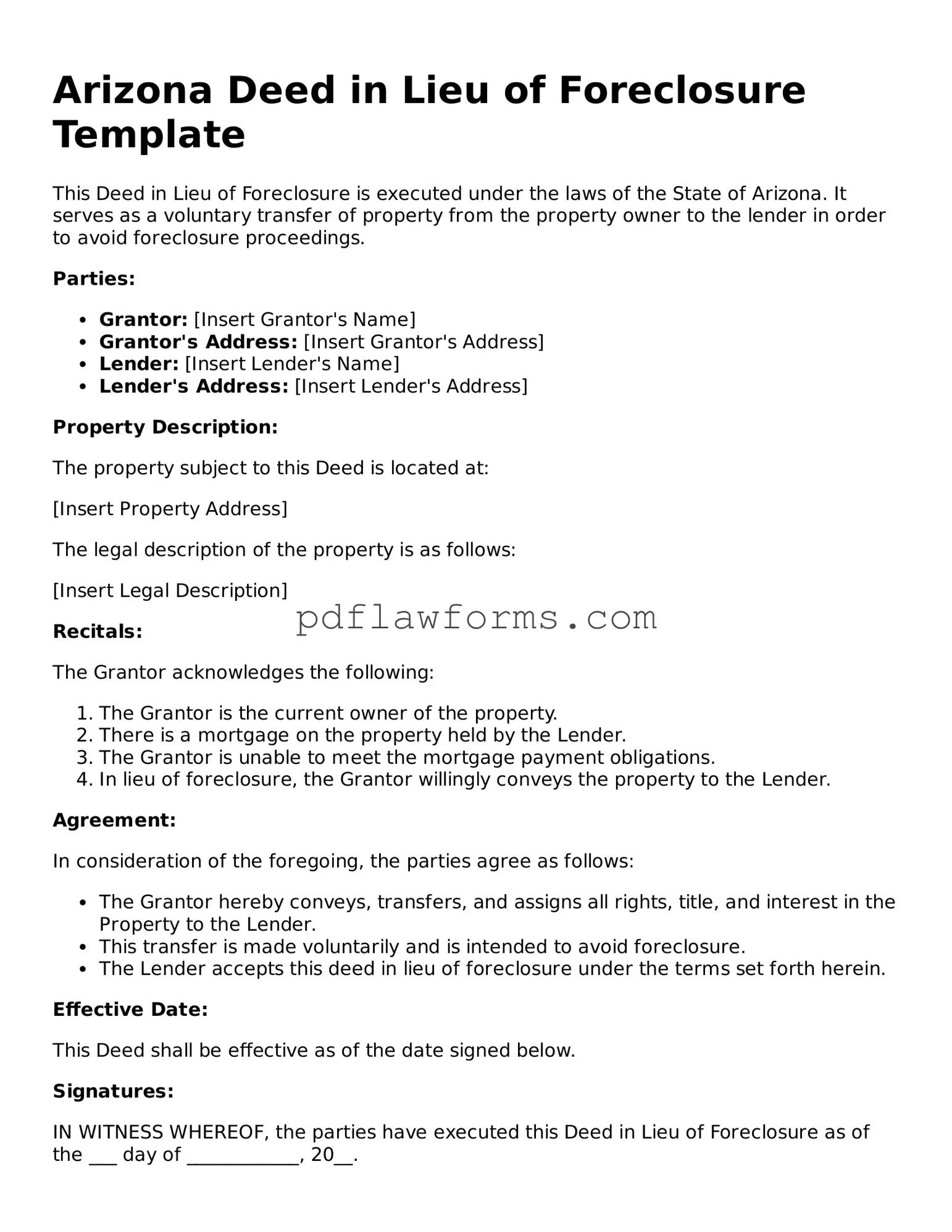Filling out the Arizona Deed form can be a straightforward process, but several common mistakes can lead to complications. One frequent error is not including the correct legal description of the property. The legal description must accurately reflect the property boundaries and details. Omitting or miswriting this information can create significant issues in the future.
Another mistake is failing to provide the names of all grantors and grantees. All individuals involved in the transaction must be clearly listed. If a name is missing, it could lead to disputes over ownership later on.
Many people also overlook the necessity of notarization. A deed must be signed in the presence of a notary public to be valid. Without this step, the document may not hold up in court.
Inaccurate dates are another common pitfall. The date of execution should be clearly marked. If the date is incorrect or missing, it may lead to confusion regarding the timeline of the transaction.
Some individuals fail to check for the correct type of deed. Different types of deeds serve different purposes, such as warranty deeds or quitclaim deeds. Using the wrong type can impact the rights and responsibilities of the parties involved.
Not including the consideration amount is another mistake. This refers to the value exchanged for the property. Leaving this out can raise questions about the validity of the transaction.
People often forget to review the form for clarity and completeness. A deed should be clear and free of any ambiguous language. Any confusion can lead to disputes down the line.
Another oversight is neglecting to include a legal entity’s designation if applicable. If a business or trust is involved in the transaction, it must be clearly identified to avoid any legal complications.
Failing to record the deed promptly can also create issues. Once the deed is signed and notarized, it should be filed with the appropriate county recorder's office. Delays in recording can affect the legal standing of the deed.
Lastly, many people underestimate the importance of consulting with a legal professional. While the form may seem simple, legal advice can help ensure that all aspects of the deed are correctly addressed, reducing the risk of future problems.
